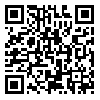BibTeX | RIS | EndNote | Medlars | ProCite | Reference Manager | RefWorks
Send citation to:
URL: http://ijoce.iust.ac.ir/article-1-280-en.html
Keeping the eigenfrequencies of a structure away from the external excitation frequencies is one of the main goals in the design of vibrating structures in order to avoid risk of resonance. This paper is devoted to the topological design of freely vibrating continuum structures with the aim of maximizing the fundamental eigenfrequency. Since in the process of topology optimization some areas of domain can potentially be removed, it is quite possible to encounter the problem of localized modes. Hence, the modified Solid Isotropic Material with Penalization (SIMP) model is here used to avoid artificial modes in low density areas. As during the optimization process, the first natural frequency increases, it may become close to the second natural frequency. Due to lack of the usual differentiability of the multiple eigenfrequencies, their sensitivity are calculated by the mathematical perturbation analysis. The optimization problem is formulated by a variable bound formulation and it is solved by the Method of Moving Asymptotes (MMA). Two dimensional plane elasticity problems with different sets of boundary conditions and attachment of a concentrated nonstructural mass are considered. Numerical results show the validity and supremacy of this approach.
Received: 2016/07/19 | Accepted: 2016/07/19 | Published: 2016/07/19
| Rights and permissions | |
 | This work is licensed under a Creative Commons Attribution-NonCommercial 4.0 International License. |





